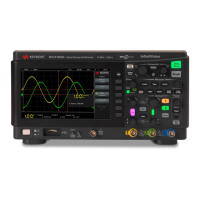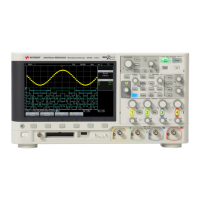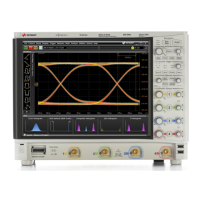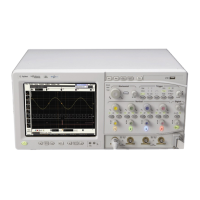320 Keysight InfiniiVision HD3-Series Oscilloscopes User's Guide
25 CAN Triggering and Protocol Decode
Connect the oscilloscope to a CAN signal that has a dominant-low polarity. If you
are connecting to the CAN signal using a differential probe, connect the probe's
positive lead to the dominant-low CAN signal and connect the negative lead to the
dominant-high CAN signal.
The CAN protocol decode mode has these controls for setting up the signal:
• Source — Selects the channel for the CAN signal.
The label for the CAN source channel is automatically set.
• Threshold — Specifies the CAN signal threshold voltage level.
The threshold voltage level is used in decoding, and it will become the trigger
level when the trigger type is set to the selected protocol decode bus.
• Signal — Selects the type and polarity of the CAN signal. This also automatically
sets the channel label for the source channel.
• CAN_H — The actual CAN_H differential bus.
• Differential (H-L) — The CAN differential bus signals connected to an analog
source channel using a differential probe. Connect the probe's positive lead
to the dominant-high CAN signal (CAN_H) and connect the negative lead to
the dominant-low CAN signal (CAN_L).
Dominant low signals:
• Rx — The Receive signal from the CAN bus transceiver.
• Tx — The Transmit signal from the CAN bus transceiver.
• CAN_L — The actual CAN_L differential bus signal.
• Differential (L-H) — The CAN differential bus signals connected to an analog
source channel using a differential probe. Connect the probe's positive lead
to the dominant-low CAN signal (CAN_L) and connect the negative lead to
the dominant-high CAN signal (CAN_H).
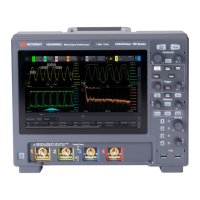
